
Quake III Arena is a 1999 multiplayer-focused first-person shooter developed by id Software. The third installment of the Quake series, Arena differs from previous games by excluding a story-based single-player mode and focusing primarily on multiplayer gameplay. The single-player mode is played against computer-controlled bots. It features music composed by Sonic Mayhem and Front Line Assembly founder Bill Leeb.

Beyond Good & Evil is a 2003 action-adventure game developed and published by Ubisoft for PlayStation 2, Windows, Xbox and GameCube. The story follows the adventures of Jade, an investigative reporter, martial artist, and spy hitwoman working with a resistance movement to reveal a sinister alien conspiracy. Players control Jade and other allies, solving puzzles, fighting enemies, obtaining photographic evidence and, later in the game, travelling to space.
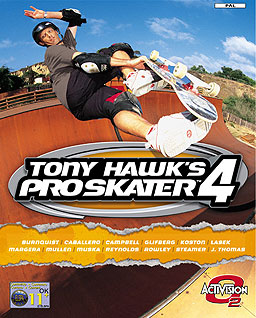
Tony Hawk's Pro Skater 4 is a 2002 skateboarding game developed by Neversoft and published by Activision under their Activision O2 label. The game was ported by different developers to various systems. It is the fourth installment in the Tony Hawk's series. The game was released in 2002 for the GameCube, PlayStation, PlayStation 2, Xbox, and Game Boy Advance. In 2003, it was published for Microsoft Windows and Mac OS X. In 2004, a Tapwave Zodiac version was released.
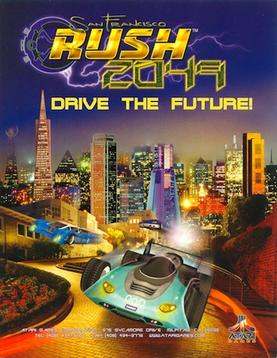
San Francisco Rush 2049 is a racing video game developed and manufactured by Atari Games for arcades. It was ported to the Nintendo 64, Game Boy Color, and Dreamcast by Midway Games West. The arcade machine was released in 1999; home versions followed in 2000 on September 7 for North America and November 17 for Europe. It is the third game in the Rush series and the sequel to San Francisco Rush: Extreme Racing and Rush 2: Extreme Racing USA. It is the last game in the Rush series to be set in the city of San Francisco and the last released on a Nintendo console. It also serves as the final game for the Atari Games label, which was retired shortly after the arcade release. The Dreamcast version was later re-released as part of Midway Arcade Treasures 3 for the PlayStation 2, Xbox, and GameCube and later for Microsoft Windows as part of Midway Arcade Treasures Deluxe Edition.

Rayman 3: Hoodlum Havoc is a 2003 platform game developed and published by Ubisoft, and the third major installment in the Rayman series. It follows Rayman in his quest to stop André from taking over the world with his army of hoodlum soldiers. It was released for the GameCube, PlayStation 2, Xbox and Microsoft Windows, and on OS X by Feral Interactive in 2004. It was also released for the Game Boy Advance, N-Gage and mobile phones as a 2D platformer.

Rayman: Hoodlums' Revenge, is a platform game developed by Backbone Entertainment and published by Ubisoft for the Game Boy Advance in 2005. It was the first Rayman game to be a isometric platformer and was set after Rayman 3: Hoodlum Havoc.

Fighters Destiny, known in Japan as Fighting Cup is a 1998 video game developed by Genki and Opus Corp for the Nintendo 64. It closely models the 3D fighting game standard set by Sega's Virtua Fighter, but integrates a unique point scoring system. The game's generic characters and unoriginal presentation have been panned by critics, but reviewers praise its point system and consider it to be one of the best fighting games on the Nintendo 64. It was followed by a 2000 sequel Fighter Destiny 2.

Rayman Raving Rabbids is a 2006 party video game developed and published by Ubisoft. It's a spinoff for the Rayman series and the debut title for the Rabbids franchise. The story follows Rayman as he was interrupted by an earthquake, in which he was also kidnapped and forced to play minigames with the Rabbids. The game received generally positive reviews from critics, with some criticizing the minigames either being broken or unenjoyable.
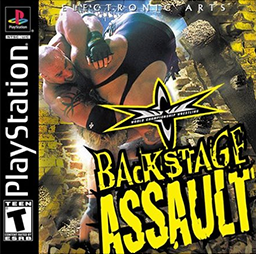
WCW Backstage Assault is a professional wrestling video game developed by Kodiak Interactive and published by Electronic Arts. It was released for the PlayStation in November 2000, and for the Nintendo 64 in December. It was the final World Championship Wrestling (WCW) game released before the World Wrestling Federation (WWF) purchased the company's assets three months later. Backstage Assault features commentary by Tony Schiavone and Bobby "The Brain" Heenan. Gameplay takes place outside of a wrestling ring, an approach that was poorly received and resulted in the title selling 200,000 copies.
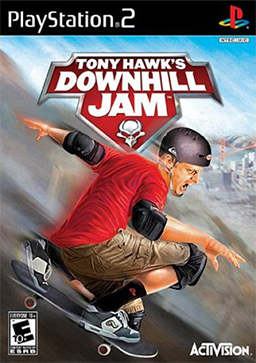
Tony Hawk's Downhill Jam is a skateboarding video game in the Tony Hawk's series. The game, named after the level "Downhill Jam" from Tony Hawk's Pro Skater, was published by Activision in 2006 as a timed Nintendo exclusive for the Nintendo DS, Game Boy Advance, and Wii. In 2007, it was published for the PlayStation 2. It is a spin-off in which accompanies the release of Tony Hawk's Project 8, which is conversely available on non-Nintendo systems.

Freaky Flyers is an air racing video game developed internally by Midway San Diego for the Xbox and PlayStation 2, while the version for the GameCube was developed by Point of View, Inc. and published by Midway.

Rayman Raving Rabbids is a 2006 platform game developed and published by Ubisoft for the Game Boy Advance and Nintendo DS. It was the handheld version of the 2006 party game Rayman Raving Rabbids.

Uno is a video game based on the card game of the same name. It has been released for a number of platforms. The Xbox 360 version by Carbonated Games and Microsoft Game Studios was released on May 9, 2006, as a digital download via Xbox Live Arcade. A version for iPhone OS and iPod devices was released in 2008 by Gameloft. Gameloft released the PlayStation 3 version on October 1, 2009, and also released a version for WiiWare, Nintendo DSi via DSiWare, and PlayStation Portable. An updated version developed by Ubisoft Chengdu and published by Ubisoft was released for the PlayStation 4 and Xbox One in August 2016, Microsoft Windows in December 2016 and for the Nintendo Switch in November 2017.
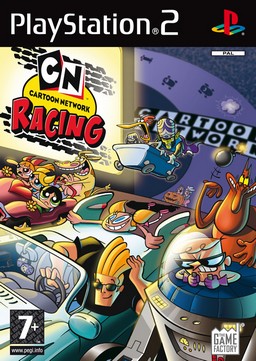
Cartoon Network Racing is a racing video game developed by Eutechnyx for PlayStation 2 and Firebrand Games for Nintendo DS, published by Danish video game developer The Game Factory, and released on December 4, 2006, in North America, and on February 9, 2007, in Europe. The gameplay is similar to Nintendo's 2003 game Mario Kart: Double Dash, but the characters and racetracks are all from six of Cartoon Network's original animated television series: Courage the Cowardly Dog, Cow and Chicken, Dexter's Laboratory, I Am Weasel, Johnny Bravo, and The Powerpuff Girls.

Rayman Raving Rabbids 2 is a party video game developed and published by Ubisoft. The sequel to Rayman Raving Rabbids and the second installment of the Raving Rabbids spin-off franchise, it was released for the Wii and Nintendo DS platforms worldwide in 2007. It follows the Rabbids' attempt to invade Earth, with their headquarters set up near a local shopping mall. Players have the option to play as a Rabbid or as Rayman, who has disguised himself as a Rabbid to infiltrate their plans. This is the first Rayman game to have an E10+ rating by the ESRB, a greater emphasis on simultaneous multiplayer gameplay compared to the original game, and online leaderboards. It was followed by Rayman Raving Rabbids: TV Party in 2008.

Just Dance is a 2009 music rhythm game developed by Ubisoft Paris and published by Ubisoft as the first main installment of the Just Dance series. The game was released exclusively for the Wii on November 17, 2009, in North America, November 26, 2009, in Australia, and November 27, 2009, in Europe.

Academy of Champions: Soccer is a soccer video game developed by Ubisoft Vancouver and published by Ubisoft for the Wii.
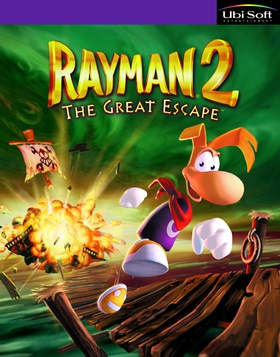
Rayman 2: The Great Escape is a 1999 platform game developed by Ubi Pictures and published by Ubi Soft for the Nintendo 64, Windows, Dreamcast and PlayStation. The game centers on the titular character Rayman, who was tasked with saving his friend Globox and the fantastical land of the Fairy Glade from an army of robotic pirates led by Admiral Razorbeard.

Rayman Legends is a platform video game developed by Ubisoft Montpellier and published by Ubisoft. It is the fifth main title in the Rayman series and the direct sequel to the 2011 game Rayman Origins. The game was released for Microsoft Windows, PlayStation 3, Xbox 360, Wii U, and PlayStation Vita platforms in August and September 2013. PlayStation 4 and Xbox One versions were released in February 2014, with a Stadia version released in November 2021. A Nintendo Switch port, titled Rayman Legends Definitive Edition, was released in North America, Europe and Australia on September 12, 2017.




















